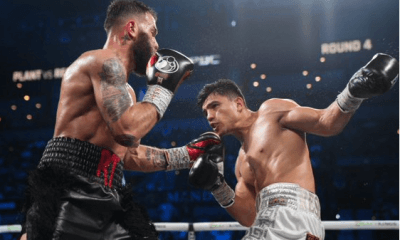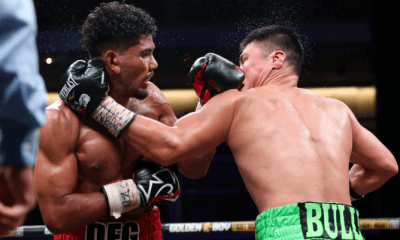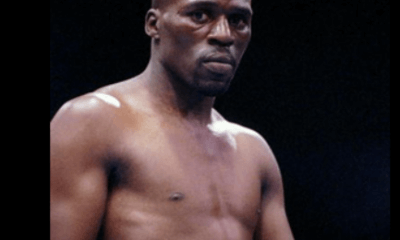Featured Articles
The Frampton Fight Is Off, but the New Main Event is a Compelling Fight
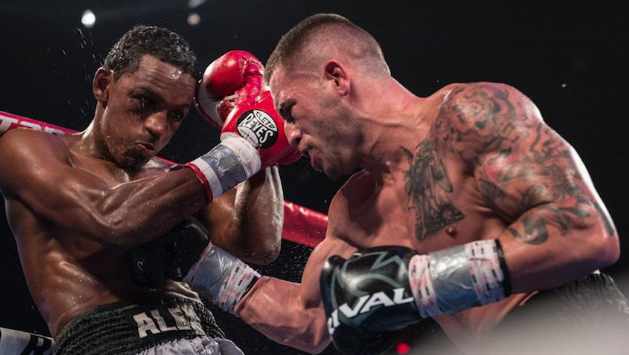
ESPN+ will broadcast a card from the Liacouras Center in Philadelphia, PA this coming Saturday. Originally the card was to be headlined by former featherweight champion Carl Frampton who was matched against Emmanuel Dominguez. However, Frampton broke his left hand Monday in a freakish accident at his hotel where a concrete pillar fell onto a table where the former champion had placed his hands.
Frampton, the former featherweight champion, was the main attraction. In all likelihood, the promoters will have to refund quite a few tickets. But the show will go on with the semi-main, Jason Sosa vs. Haskell Lydell Rhodes, a 130-pound contest scheduled for 10 rounds, bumped into the main event. And this shapes up as a very entertaining fight. In fact, before learning of Frampton’s injury, I had written that the fight between Sosa (22-3-4, 15 KOs) and Rhodes (27-3-1, 13 KOs) would likely steal the show.
This is an evenly matched crossroads fight that features a contrast of styles. Sosa, who hails from nearby Camden, NJ, knows only one way to fight and that is to come forward applying constant pressure and he will do so from the opening bell. An accomplished body puncher when he gets into range, Sosa is the type of fighter that is more than willing to take a few punches just to get the opportunity to land one of his own.
While Sosa’s style tends to lead to exciting contests, it can also take a toll on a fighter. In his last fight in January, Sosa struggled mightily in winning a 10-round decision against sub-.500 journeyman Moises Delgadillo. There is a legitimate question as to just how much Sosa has left in his tank.
Rhodes is a quick athletic fighter who likes to use his legs. He is going to use the entire ring and fight from the outside carefully picking his spots to unload his punches. While he does have fast hands, he tends to not be busy enough in fights and allows himself to be outhustled. Against Sosa, Rhodes will need to be more active than we have seen in the past.
Stylistically, Rhodes could be a nightmare for Sosa. But Sosa is just so determined and will keep coming, applying the pressure all night even if he may not be the same fighter from just a few years ago. The contrast of styles along with the evenly matched skill levels should make this a very entertaining bout.
How To Make Boxing A Safer Sport, Part One
If there is something that all boxing fans can agree upon it is the need to make this a safer sport. But just how is that accomplished? What I propose is a minor rule adjustment.
Open scoring has long been a subject of debate amongst boxing fans. For the longest time, I was strongly opposed to any and all concepts of it. But my thoughts have changed ever so slightly as I now think that a modified form of open scoring if universally adopted can improve fighter safety.
Before I present my proposal, let me start with an anecdote. I will from time to time wager a few bucks on a fight. And sometimes my having a little skin in the game will alter how I view a fight. I sometimes see something in favor of the fighter that I wagered on that others are just not seeing.
Whenever this happens, I always go back and watch the fight a second time. And amazingly, I generally see something entirely different.
So where am I going with this? Well, if $25 can skew my viewpoint, I can only imagine how someone with a much larger stake in the fight — a cornerman, manager, etc — could be viewing it. No doubt their perceptions can be skewed as to what is actually occurring inside the ring.
I would like to see a modified open scoring system implemented for any bouts that are scheduled for more than eight rounds to make potentially relevant parties aware of what is actually occurring in the bout.
For example, let’s take a bout scheduled for 12 rounds. If after eight rounds a fighter needs at least one 10-8 round to get mathematically back into the fight on the scorecards, the commission informs that fighter’s corner, the referee and doctor. No scores are read but the commission is informing everyone just where that fighter stands on the scorecards. This would also be done after the ninth round if the scenario still exists.
Every fight is different and this is not saying the fight should necessarily be stopped. But the seeds are planted for everyone to start monitoring the situation much more carefully. If the fighter shows no hope of turning things around, then those involved (referee, corner, doctor and commission) may opt to end things rather than allowing the fighter to take more needless punishment.
For a 10-round fight, the commission would inform the relevant parties after rounds six and seven. For an 8-round fight, this would be done only after round six.
Please note this is a careful balancing act as to not go too far with open scoring where it alters the dynamics of a fight. This is why this would only be done after those select rounds and not after rounds 10 or 11 of a 12-round bout. We are trying to catch obvious situations of one-sided fights and inform the relevant parties of the facts of the situation.
For the record, this idea first came to me after watching the Teofimo Lopez-Diego Magdaleno fight in February. If the relevant parties had all been told just where Magdaleno had stood on the scorecards after round six, there is a good chance someone would have ended that bout before allowing Magdaleno to absorb vicious and unnecessary punishment in the following round before ultimately getting knocked out.
These are the situations that I want to see avoided going forward and such a modified open scoring system could do just that.
How To Make Boxing A Safer Sport, Part Two
Something that we in the media and as fans can do to make this sport safer is to change out mindset on certain things. In particular, I think we need to remove the term “quit” from our vocabulary and instead applaud fighters for making the courageous decision not to go forward in a bout.
Again, let me begin with a quick anecdote. I was upset when Guillermo Rigondeaux did not come out of his corner to start round seven for his fight with Vasiliy Lomachenko in December of 2017. I voiced my displeasure on social media and various other outlets. In hindsight, I was wrong for doing so.
The first line of defense for a fighter is his corner. The second is the referee. But neither the corner nor the referee can truly know what is going on inside a fighter’s body during a fight. This is where it is on the fighter to make the courageous decision if something is not feeling right and remove himself from the fight.
In the boxing culture, a fighter making such a decision generally faces an enormous backlash. And as such, many fighters are hesitant to take this step. But we need to change that culture. If something is not right, fighters need to be encouraged to pull themselves out of a fight.
In many sports, athletes are often told that if something is not feeling right that they need to inform someone as soon as possible. For example, a major league pitcher who is feeling discomfort is in pitching arm is expected to tell his manager this even if that means having to be removed from the game. The pitcher is not quitting but making a common sense decision to keep a possible injury from getting much worse.
Boxing needs to adopt the cultures of other sports and encourage fighters to make common sense decisions when something does not feel right. This falls in part on us as members of the media as well as fans. By us doing so, a fighter may feel more comfortable in removing himself from a bad situation and that could potentially save that fighter from serious injury.
Check out more boxing news on video at The Boxing Channel
To comment on this story in The Fight Forum CLICK HERE
-

 Featured Articles3 weeks ago
Featured Articles3 weeks agoThomas Hauser’s Literary Notes: Johnny Greaves Tells a Sad Tale
-
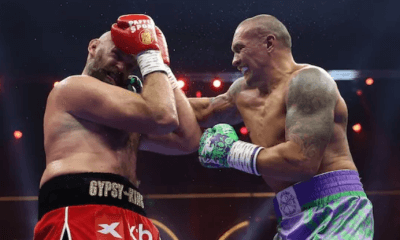
 Featured Articles2 weeks ago
Featured Articles2 weeks agoBoxing Notes and Nuggets from Thomas Hauser
-
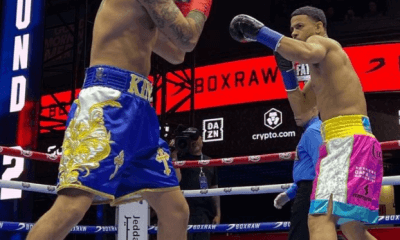
 Featured Articles4 weeks ago
Featured Articles4 weeks agoRolly Romero Upsets Ryan Garcia in the Finale of a Times Square Tripleheader
-
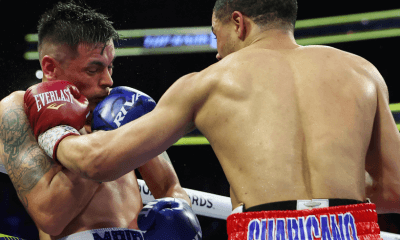
 Featured Articles4 weeks ago
Featured Articles4 weeks agoUndercard Results and Recaps from the Inoue-Cardenas Show in Las Vegas
-
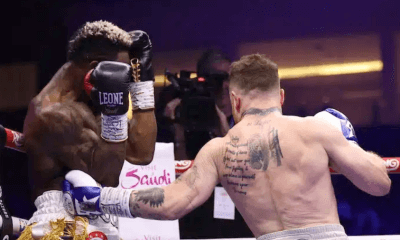
 Featured Articles4 weeks ago
Featured Articles4 weeks agoCanelo Alvarez Upends Dancing Machine William Scull in Saudi Arabia
-
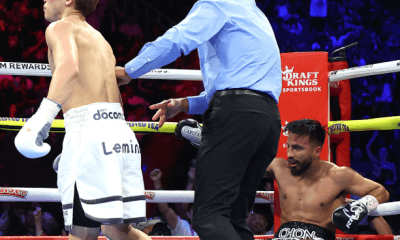
 Featured Articles4 weeks ago
Featured Articles4 weeks agoBombs Away in Las Vegas where Inoue and Espinoza Scored Smashing Triumphs
-
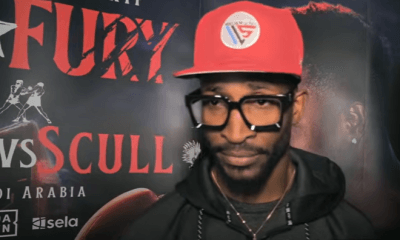
 Featured Articles4 weeks ago
Featured Articles4 weeks agoArne’s Almanac: The Good, the Bad, and the (Mostly) Ugly; a Weekend Boxing Recap and More
-
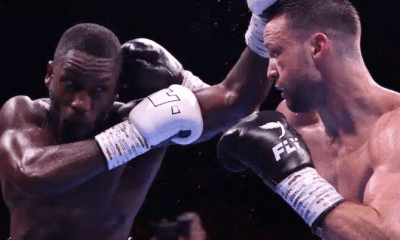
 Featured Articles1 week ago
Featured Articles1 week agoEkow Essuman Upsets Josh Taylor and Moses Itauma Blasts Out Mike Balogun in Glasgow

